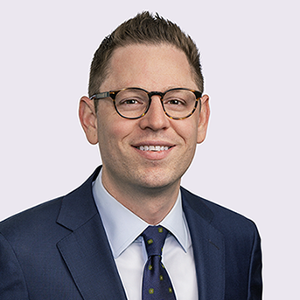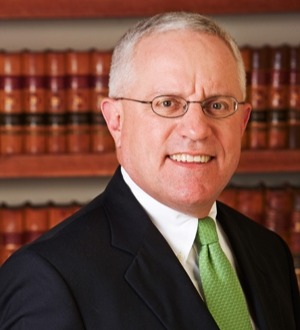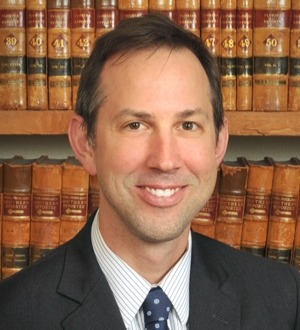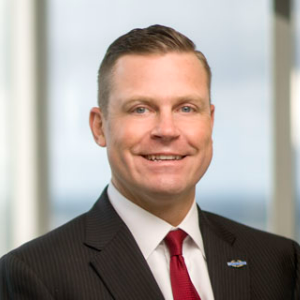
V. James Dickson
About V. James Dickson
V. James Dickson is a lawyer based in Tampa, FL and has been recognized in The Best Lawyers in America® since 2009. V. James Dickson is recognized in the following practice areas:
- Tampa, Florida
- Construction Law
- Litigation - Construction
Current Firm: Adams and Reese LLP
Education: Indiana University Bloomington, J.D., graduated 1977 and Indiana University Bloomington, B.A., graduated 1972
Location: Tampa, FL
Nearby Lawyers
Jason Whittemore is a top attorney recognized by Best Lawyers in the practice area(s) of Legal Malpractice Law - Plaintiffs, Personal Injury Litigation - Plaintiffs and Product Liability Litigation - Plaintiffs. Jason, who practices law in Tampa, Florida, has been recognized since 2021. This recognition is based on an exhaustive peer-review survey, reflecting the high esteem in which Jason is held by other top lawyers in the same geographic and legal practice area.
Todd Foster - Managing Attorney, Todd Foster Law Group Todd Foster's 30 years of professional experience as an FBI special agent, Assistant United States Attorney, state prosecutor, and private counsel set him apart from other criminal defense attorneys. Todd began his career in 1981 as an assistant state attorney in Jacksonville. After serving as a state prosecutor, he joined the Federal Bureau of Investigations as a special agent. During his tenure at the FBI, Todd learned the intricacies o...
Chris Cavaliere is a principal in the Tampa, Florida, office of Jackson Lewis P.C. He proactively partners with businesses throughout the country to help them navigate the daily workplace challenges of today’s business world. When preventative strategies are not enough, Chris also strategically represents businesses in employment-related disputes and litigation. Whatever the workplace issue, he ensures the best team is assembled to serve the client’s specific needs. Chris takes pr...
Ryan T. Hopper is a top attorney recognized by Best Lawyers in the practice area(s) of Commercial Litigation. Ryan T., who practices law in Tampa, Florida, has been recognized since 2025. This recognition is based on an exhaustive peer-review survey, reflecting the high esteem in which Ryan T. is held by other top lawyers in the same geographic and legal practice area.
Irina Khasin is a top attorney recognized by Best Lawyers in the practice area(s) of Criminal Defense: White-Collar. Irina, who practices law in Tampa, Florida, has been recognized since 2026. This recognition is based on an exhaustive peer-review survey, reflecting the high esteem in which Irina is held by other top lawyers in the same geographic and legal practice area.
Brian D. Agliano is a top attorney recognized by Best Lawyers in the practice area(s) of Medical Malpractice Law - Defendants and Personal Injury Litigation - Defendants. Brian D., who practices law in Tampa, Florida, has been recognized since 2024. This recognition is based on an exhaustive peer-review survey, reflecting the high esteem in which Brian D. is held by other top lawyers in the same geographic and legal practice area.
Charles A. Postler is a top attorney recognized by Best Lawyers in the practice area(s) of Bankruptcy and Creditor Debtor Rights / Insolvency and Reorganization Law, Corporate Law and Real Estate Law. Charles A., who practices law in Tampa, Florida, has been recognized since 2010. This recognition is based on an exhaustive peer-review survey, reflecting the high esteem in which Charles A. is held by other top lawyers in the same geographic and legal practice area.
Daniel R. Fogarty is a top attorney recognized by Best Lawyers in the practice area(s) of Bankruptcy and Creditor Debtor Rights / Insolvency and Reorganization Law and Litigation - Bankruptcy. Daniel R., who practices law in Tampa, Florida, has been recognized since 2018. This recognition is based on an exhaustive peer-review survey, reflecting the high esteem in which Daniel R. is held by other top lawyers in the same geographic and legal practice area.
Matthew Hall primarily focuses his practice on complex commercial litigation, insurance coverage disputes, management-side employment matters and federal court practice. The diversity of his practice is reflected in the diversity of the clients he represents – from Fortune 100 companies to small and up-and-coming businesses and individuals. Matthew has worked to obtain seven-figure recoveries on behalf of his clients in breach of contract and insurance coverage actions and successfully ...
Dominic Kouffman is a top attorney recognized by Best Lawyers in the practice area(s) of Litigation - Trusts and Estates. Dominic, who practices law in Tampa, Florida, has been recognized since 2023. This recognition is based on an exhaustive peer-review survey, reflecting the high esteem in which Dominic is held by other top lawyers in the same geographic and legal practice area.
Explore and Learn
2026 Best Lawyers Awards: Recognizing Legal Talent Across the United States
by Jamilla Tabbara
The 2026 editions highlight the top 5% of U.S. attorneys, showcase emerging practice areas and reveal trends shaping the nation’s legal profession.

Gun Rights for Convicted Felons? The DOJ Says It's Time.
by Bryan Driscoll
It's more than an administrative reopening of a long-dormant issue; it's a test of how the law reconciles the right to bear arms with protecting the public.

2026 Best Lawyers Awards in Canada: Marking 20 Years of Excellence
by Jamilla Tabbara
Honoring Canada’s most respected lawyers and spotlighting the next generation shaping the future of law.

How to Sue for Defamation: Costs, Process and What to Expect
by Bryan Driscoll
Learn the legal standards, costs and steps involved when you sue for defamation, including the difference between libel and slander.

Best Lawyers 2026: Discover the Honorees in Brazil, Mexico, Portugal, South Africa and Spain
by Jamilla Tabbara
A growing international network of recognized legal professionals.

Build Your Legal Practice with Effective Online Networking
by Jamilla Tabbara
How thoughtful online networking supports sustained legal practice growth.

Blogging for Law Firms: Turning Content into Client Connections
by Jamilla Tabbara
How law firms use blogs to earn trust and win clients.

Reddit’s Lawsuit Could Change How Much AI Knows About You
by Justin Smulison
Big AI is battling for its future—your data’s at stake.

How to Choose a Good Lawyer: Tips, Traits and Questions to Ask
by Laurie Villanueva
A Practical Guide for Your First-Time Hiring a Lawyer









